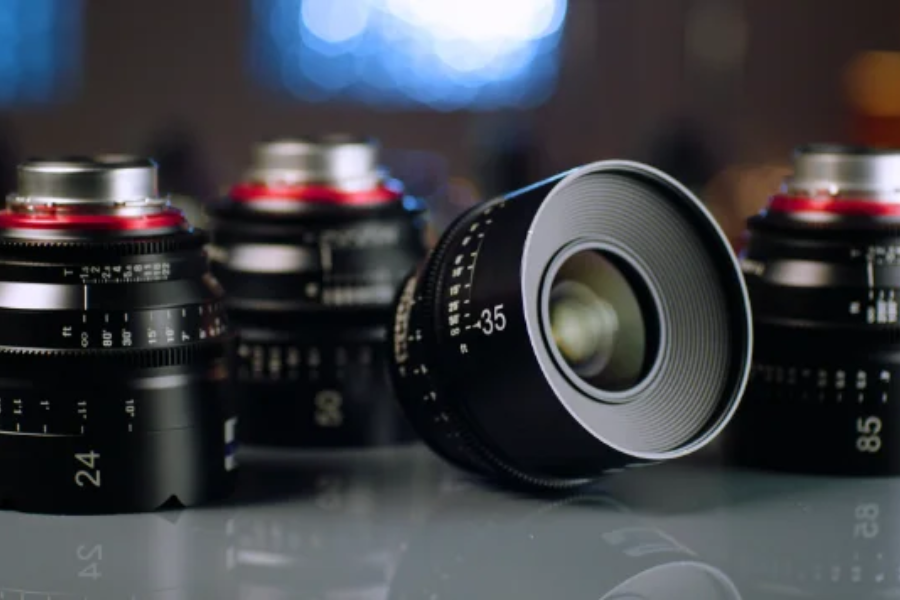Rehoused Lenses Panavision Tokina: The Ultimate Guide for Filmmakers
Discovering the Magic of Rehoused Lenses
In the world of film and photography, the lens you choose can dramatically shape your visual story. Rehoused lenses are a revolutionary option for filmmakers and photographers, offering a blend of vintage charm and modern functionality. These lenses breathe new life into older optics, enhancing their performance while preserving their unique character. Brands like Panavision and Tokina are leaders in this space, known for their meticulous craftsmanship and exceptional optical quality. Whether you’re working on a cinematic masterpiece or a creative project, rehoused lenses could be the key to unlocking your full artistic potential. Let’s delve into the fascinating world of “Rehoused lenses Panavision Tokina” and discover why these tools are transforming visual storytelling.
The Advantages of Rehoused Lenses: Elevating Your Filmmaking Experience
Rehoused lenses have become an indispensable tool for filmmakers and cinematographers, offering enhanced functionality and a superior shooting experience. These lenses, often crafted from vintage optics, are meticulously modified to meet the demands of modern filmmaking, and the benefits they bring are substantial.
One of the standout advantages is their durability. Rehoused lenses are typically constructed with more robust materials, making them highly resistant to the rigors of on-set use. This added toughness ensures that they can withstand the demands of intense shooting schedules, providing filmmakers with confidence and reliability.
Another significant perk is the improved ergonomics. Many rehoused lenses are designed with standardized gear rings, which make them compatible with follow-focus systems and allow for smoother focus pulls. This added precision and Rehoused Lenses Panavision Tokina ease of use can be a game-changer when capturing complex scenes.
Beyond physical enhancements, rehoused lenses often undergo optical recalibration to minimize issues like distortion and flare. The result is consistently sharp, clear images that retain their integrity across various lighting conditions and settings.
What sets rehoused lenses, particularly those from Panavision and Tokina, apart is their unique aesthetic quality. These lenses offer a distinct character that many directors of photography seek, adding depth and richness to the visual narrative that standard lenses might not provide.
Rehoused Lenses vs. Regular Lenses: Key Differences
When deciding between rehoused lenses and regular lenses, it’s essential to understand the distinct advantages each offers.
Rehoused lenses, which are modified versions of existing optics, are designed for enhanced functionality and adaptability on professional film sets. While regular lenses may be more affordable, they often lack the durability Rehoused Lenses Panavision Tokina and precision mechanics that rehoused lenses provide. The latter are typically housed in sturdier materials and feature advanced engineering tailored for high-end use.
One of the most noticeable differences is in the focus mechanism. Rehoused lenses generally offer smoother focus transitions, thanks to geared rings that work seamlessly with follow-focus systems. This level of control can make a significant difference during complex shots, where precision is key.
In terms of image Rehoused Lenses Panavision Tokina quality, rehoused lenses frequently outperform regular lenses. The modifications they undergo help reduce flares and distortion while enhancing color accuracy and overall clarity. This makes them a preferred choice for cinematographers who strive for a polished, cinematic look.
Leading Brands in Rehoused Lenses: Panavision and Tokina
In the world of rehoused lenses, Panavision and Tokina are two brands that have set themselves apart, Rehoused Lenses Panavision Tokina consistently delivering top-tier products that filmmakers trust. These brands cater to professionals who demand the best in optical performance and durability.
Panavision is a name synonymous with cinematic excellence. Their rehoused lenses are known for maintaining the distinct character of the original glass while offering modern enhancements. Each lens is crafted with meticulous attention to detail, ensuring that it delivers stunning visuals across various focal lengths, making them a preferred choice for filmmakers aiming for a high-end, cinematic look.
Tokina, on the other hand, offers a unique blend of quality and affordability. Known for their solid build and optical performance, Tokina’s rehoused lenses provide a versatile option for filmmakers without compromising on image quality. Their lenses are robust and reliable, making them a favorite among Rehoused Lenses Panavision Tokina professionals who need both durability and exceptional visuals.
Both Panavision and Tokina represent the pinnacle of craftsmanship in the rehoused lens market. They continue to innovate while staying true to the traditional art of lens making.
What Makes Panavision Rehoused Lenses Stand Out?
Panavision rehoused lenses are renowned for their meticulous design and attention to detail. These lenses take the vintage charm of classic glass and integrate it into modern, durable housings, perfect for today’s demanding film sets.
One of the key features is the enhanced mechanics, which allow for smoother focus and zoom operations. The precision Rehoused Lenses Panavision Tokina engineering in Panavision lenses ensures that every movement is fluid, which is critical during complex shots.
Designed to be both lightweight and durable, these lenses withstand the challenges of any shooting environment without sacrificing quality. Their ergonomic design further enhances the user experience, making them comfortable to use even during long filming sessions.
Panavision’s commitment to image quality is evident in their rehoused lenses. They offer excellent color rendition, sharpness, and control over flare, making them ideal for cinematographers who seek both artistic integrity Rehoused Lenses Panavision Tokina and reliable performance.
Key Features of Tokina Rehoused Lenses
Tokina rehoused lenses are celebrated for their durability and visual performance, combining the best aspects of their original designs with modern enhancements.
A standout feature of Tokina lenses is the smooth focus ring, which provides cinematographers with precise control. This allows for Rehoused Lenses Panavision Tokina seamless focus transitions, crucial for capturing the perfect shot.
The robust housing is another highlight, designed to withstand the rigors of professional filmmaking. Whether you’re shooting in tough weather conditions or on a hectic set, these lenses are built to last.
Tokina lenses are also known for their consistent color reproduction across different focal lengths, simplifying the post-production process. Additionally, the standardized gear rings make them easily compatible with follow-focus systems, enhancing workflow efficiency on set.
Choosing the Right Rehoused Lens: What to Consider
When selecting a rehoused lens, several factors should be taken into account to ensure it meets your needs.
Optical quality is paramount; make sure the lens maintains sharpness and minimizes distortion throughout its focal range. Compatibility with your camera system is another crucial factor, as different mounts can impact performance.
Consider the weight of the lens, as rehoused models tend to be heavier due to the added materials used for durability. This can affect your shooting experience, especially during handheld or lengthy sessions.
Budget is also an important consideration. High-quality rehoused lenses represent a significant investment, so it’s essential to evaluate Rehoused Lenses Panavision Tokina how they fit into your overall production costs.
Lastly, examine any additional features like enhanced focus rings or aperture control modifications, which can greatly improve shooting efficiency and precision on set.
Debunking Common Myths About Rehoused Lenses
There are several misconceptions about rehoused lenses that deserve clarification.
One common myth is that rehoused lenses are simply modified versions of cheaper alternatives. In reality, these lenses retain the Rehoused Lenses Panavision Tokina original optical quality while being tailored for modern filmmaking needs.
Another misconception is that using rehoused lenses requires extensive technical expertise. While some knowledge is helpful, many of these lenses come with user-friendly features designed for filmmakers of all experience levels.
Some also believe that rehoused lenses are only suitable for big-budget productions. In truth, filmmakers of various budgets can Rehoused Lenses Panavision Tokina benefit from the unique qualities these lenses offer, including their distinctive aesthetics and robust build.
Finally, concerns about compatibility with different camera systems are often unfounded. Reputable rehousing services ensure their products are compatible with a wide range of popular cameras, making them a versatile choice for filmmakers.
Conclusion
Rehoused Lenses Panavision Tokina a remarkable fusion of vintage charm and modern functionality, making them invaluable tools for today’s filmmakers. Panavision lenses are renowned for their meticulous Rehoused Lenses Panavision Tokina design and precision, ensuring exceptional image quality and durability. Tokina lenses, with their robust build and affordability, provide a practical and versatile solution without compromising optical performance.
Choosing the right rehoused lens depends on your specific needs, whether you prioritize high-end craftsmanship or a balanced approach to performance and cost. Both brands offer unique advantages that can elevate your visual storytelling, allowing you to capture stunning, high-quality images. By understanding the benefits and features of each, you can make an informed decision that enhances your filmmaking experience and brings your creative vision to life.
Keep up with current events and insightful reports from the U.S. and international news at TribuneUS.com.







